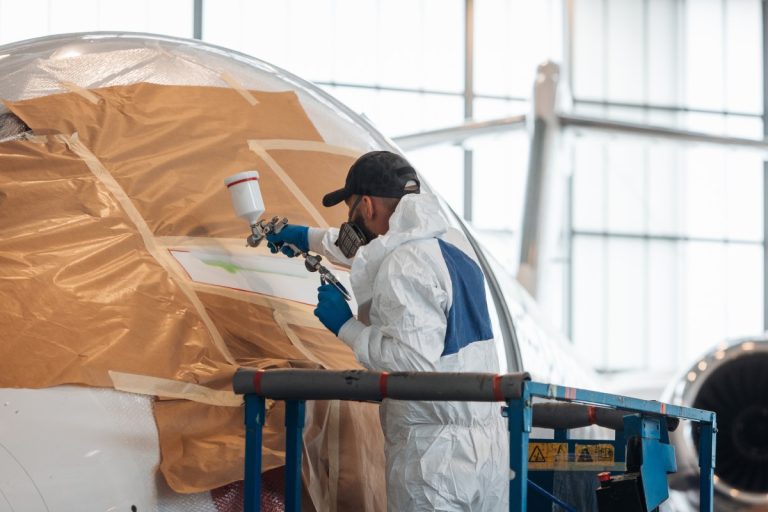The lease return or redelivery process is the final stage in the aircraft leasing life cycle, referring to the time from when an aircraft lessor and lessee begin planning for redelivery to the change of physical possession and signature of technical acceptance by the lessor.
This phase of the leasing lifecycle is of great importance to the lessor and lessee as it could have significant financial and reputational implications if not managed well.
For the lessor:
- The lease return period overlaps with onward remarketing of the aircraft for sale or subsequent operating lease. Achieving a timely and efficient lease return is paramount to meeting onward contractual delivery obligations, against which they may face penalties or even lease termination if not otherwise met.
- It is where they realise the aircraft’s residual value, crystalising the majority of their forecasted financial returns from the lease. The lease return process ensures the aircraft is returned to the lessor in an agreed technical condition against which lessors have evaluated their residual value assumptions.
For the lessee:
- The lease return period is a resource-intensive process. Any delays or mistakes will impact resource allocation in addition to financial penalties imposed by the lessor for late redelivery or non-compliance with the redelivery conditions. Financial penalties may include mechanisms such as penalty rent (which can be a multiple of the normal rental rate) and redelivery condition buy-outs (with the lessee paying a penalty for not meeting the redelivery conditions).
- It holds reputational risk. If the lessee is unable to execute a timely and efficient lease return, lessors may be reluctant to place additional aircraft or may charge a premium pricing for the additional risk.
The process is further complicated when the lessor utilises the redelivery process to meet the delivery conditions of its subsequent lessee, as lessors endeavour to shorten the time between successive leases. Under such a scenario, there will be additional requirements added to the redelivery process for repainting and interior reconfiguration, if not for other activities. This increases the workload and stresses the redelivery timeline considerably. In this regard, all stakeholders must work collaboratively to achieve an outcome in all parties’ best interests – timely redelivery and transition from the lessee to the lessor (or subsequent lessee).
Advanced planning, open communication, and the establishment of redelivery project management teams comprising representatives from both the lessor and lessee are critical to achieving a timely and efficient lease return process.
Typically, we break down the lease return or redelivery process into the Pre-Redelivery Phase and the Redelivery Phase. They are elaborated on below.
PRE-REDELIVERY PHASE
The pre-redelivery phase starts 24 months before the redelivery date and finalises 6-4 months before the redelivery. This timing is flexible but highly dependent on the status of the records and overall organisation. It is good practice to prepare with as much time as possible.
This phase should commence as soon as the lessee decides to return the aircraft to the lessor rather than extend the lease (or the lessor following up with the lessee in advance and preparing for any such eventualities). At a high level, the following tasks should be performed during this initial planning phase:
- Lessee internal decision about returning the aircraft or extending the lease.
- Appointment of lessor and lessee project managers and technical consultants.
- Performing a detailed analysis of the return conditions.
- Holding initial planning meetings between all involved parties.
- Issuing a detailed redelivery project plan.
- Initial preparation and presentation of aircraft records to the lessor
- Initial review and corrections list based on the aircraft records.
- Selection and appointment of MRO for the redelivery check.
- Performing an initial physical inspection.
- The aircraft is then ready to move to the Redelivery phase.
REDELIVERY PHASE
The final phase takes place 4-6 months before the scheduled redelivery date, focusing on performing the aircraft redelivery check and preparing the final aircraft records.
It is good practice to include a “redelivery book” or “redelivery bible” containing updated and relevant summary sheets. All summary sheets should be evidenced by the supporting documentation, enabling the lessor to verify the data received quickly. Particular attention should be paid to compliance files for Airworthiness Directives (ADs), modifications, repairs, and components.
Together with the associated compliance files, building the redelivery book is one of the most labour-intensive phases of redelivery. The lessee’s records staff should work side by side with the lessor’s team of inspectors or appointed consultants to finalise the following:
- Issuing the preliminary aircraft check package.
- Finalising the check package definitions.
- Holding a pre-input meeting with the MRO.
- Receipt of the maintenance plan from the MRO.
- Incorporating any other redelivery considerations per the return conditions.
- Issuing the final discrepancy list.
- Addressing any outstanding commercial or contractual matters, i.e. missed redelivery conditions.
- Redelivering the aircraft to the lessor at the agreed redelivery location.
In addition to established and proven procedures, as a highlighted above, the following considerations should be taken into account to ensure a smooth redelivery process:
- Appointing experienced technical project managers by both the lessee and lessor, acting as focal points between the various project teams.
- Cooperation between the respective parties, communicating openly and honestly, and building a collaborative working relationship.
- Establish regular face-to-face and virtual meetings to ensure proper follow-up, accountability, and agreement to any remedial actions.
- Development of a robust “Project Plan” or “Project Initiation Document” by the lessee, detailing the primary tasks and key milestones of the redelivery. Such document forms the basis for engaging with the lessor, agreeing on, and monitoring the complete redelivery process. This project plan serves as a baseline during the follow-up meetings and the redelivery process.
- Agree on the scope of the return inspections in advance to avoid any last-minute misunderstandings.
- Usually overlooked is the list of internal repairs with individual repair files for each defect and a Structural Repair Inspections (SRI) list, such as the external repairs list, i.e. the Dent & Buckle Chart.
- From the lessor’s side, ensuring that both physical and documental issues are resolved during the redelivery phase. After the technical acceptance is signed, obtaining any information or resolving any outstanding issues with the former lessee may be difficult.
In summary, having a robust project plan, open and honest communication, and a collaborative approach to project management is essential to a successful redelivery process. The redelivery process is complex and requires the collaboration and cooperation of several parties, sometimes with competing interests. Engaging an experienced team of technical consultants and advisors is highly recommended—the experience and efficiency afforded by a technical consultant significantly outperform any momentary cost savings by running in-house. A third-party consultant is a wise investment if the lessor or financier does not have appropriate resources and expertise internally.
If you are planning upcoming lease returns and would like independent advice, please send us an enquiry, and our technical team would be happy to assist. Please visit our dedicated pages for investors, lenders, lessors and operators to learn more about our aircraft transactional lifecycle services and how we can support you.




